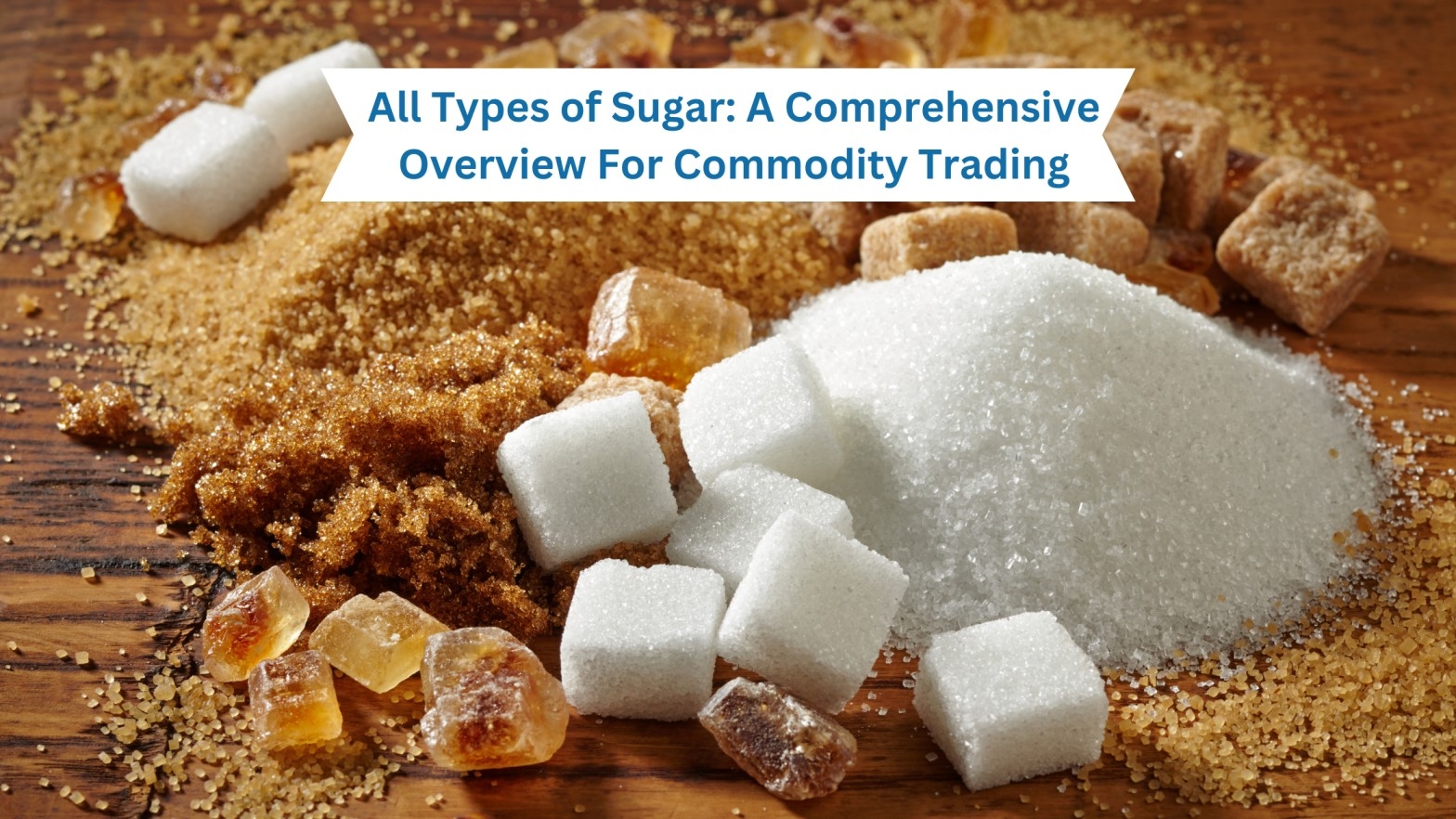All Types of Sugar: A Comprehensive Overview For Commodity Trading

Sugar, the ubiquitous sweetener gracing our tables and fueling countless industries, is a fascinating commodity with a rich history and dynamic market. Understanding the different types of sugar, their production processes, and factors influencing the sugar commodity price is crucial for anyone considering venturing into sugar commodity trading.
The global sugar market is a multi-billion dollar industry, with prices constantly fluctuating based on supply, demand, and weather conditions. As of August 2024, sugar commodity prices have decreased by roughly 14% compared to the year's beginning. This highlights the importance of staying informed about the various sugar types and their unique market forces.
Delving into the Sweet World of Sugar:
Sugar, in its simplest form, is a carbohydrate found naturally in various plants, including sugarcane and sugar beet. However, the commercially traded sugar we encounter undergoes a refining process to extract sucrose, the primary sugar molecule used for consumption and industrial purposes.
Here's a breakdown of the most common types of sugar encountered in commodity trading:
1. Raw Sugar:
Raw sugar, also known as mill white or brown sugar, is the unrefined product obtained from crushing sugarcane or sugar beet. It has a golden brown color and a molasses content that imparts a distinct flavor and aroma.
Production Process:
The production of raw sugar involves several steps:
-
Harvesting: Sugarcane is harvested mechanically or by hand, while sugar beet is typically mechanically harvested.
-
Crushing: The harvested cane or beet is crushed to extract the juice.
-
Clarification: The juice is treated with lime to remove impurities and precipitate proteins.
-
Evaporation: The clarified juice is concentrated through evaporation, removing water.
-
Crystallization: The concentrated juice is cooled, causing sucrose crystals to form.
-
Centrifugation: The crystallized mixture is centrifuged to separate the sugar crystals from the molasses.
Market Significance:
Raw sugar is the primary type traded on international commodity exchanges like the Intercontinental Exchange (ICE) and the New York Stock Exchange (NYSE). The Sugar No. 11 contract on the ICE serves as the global benchmark for raw sugar trading.
2. Refined Sugar:
Refined sugar, also known as white sugar, undergoes further processing to remove remaining impurities and molasses, resulting in a white, odorless, and tasteless product with high purity (>99.5% sucrose).
Processing Steps:
Refined sugar production involves additional steps after obtaining raw sugar:
-
Affination: Raw sugar is dissolved in a syrup to remove residual impurities and color.
-
Carbonatation: The syrup is treated with carbon dioxide to further clarify it.
-
Evaporation and Crystallization: Similar to raw sugar production, the syrup is concentrated and cooled, promoting further sucrose crystal formation.
-
Centrifugation and Drying: Crystals are separated and dried to obtain white sugar.
Market Significance:
Refined sugar is the most common type of sugar consumed globally. While not directly traded on major exchanges, its price is heavily influenced by the raw sugar market.
3. Liquid Sugar:
Liquid sugar, also known as invert sugar or high-fructose corn syrup (HFCS), is a processed sugar alternative derived from sugarcane, sugar beet, or corn. It's a clear, syrupy liquid with a high sweetness level and unique handling properties.
Production Process:
The production of liquid sugar involves enzymatic conversion or hydrolysis of sucrose into simpler sugars like fructose and glucose.
-
Sucrose Splitting: Sucrose molecules are broken down into fructose and glucose using enzymes or acid.
-
Concentration: The resulting syrup is concentrated to achieve the desired sweetness level.
Market Significance:
Liquid sugar is widely used in the food and beverage industry due to its ease of handling, sweetness profile, and ability to extend shelf life. Its price is influenced by the cost of raw sugar and corn, another major commodity.
4. Organic Sugar:
Organic sugar is produced from organically grown sugarcane or sugar beet, following strict regulations regarding the use of pesticides and fertilizers.
Production Process:
Organic sugar production follows similar steps to conventional sugar but adheres to organic farming practices.
-
Organic Farming: Sugarcane or sugar beet is grown without synthetic pesticides, herbicides, or genetically modified organisms (GMOs).
-
Minimal Processing: Organic sugar may undergo minimal processing techniques to minimize the use of chemicals.
Market Significance:
Organic sugar caters to a growing segment of consumers seeking natural and sustainably sourced products. Its price usually commands a premium compared to conventional sugar.
- Industry
- Art
- Causes
- Crafts
- Dance
- Drinks
- Film
- Fitness
- Food
- Games
- Gardening
- Health
- Home
- Literature
- Music
- Networking
- Other
- Party
- Religion
- Shopping
- Sports
- Theater
- Wellness
- News


